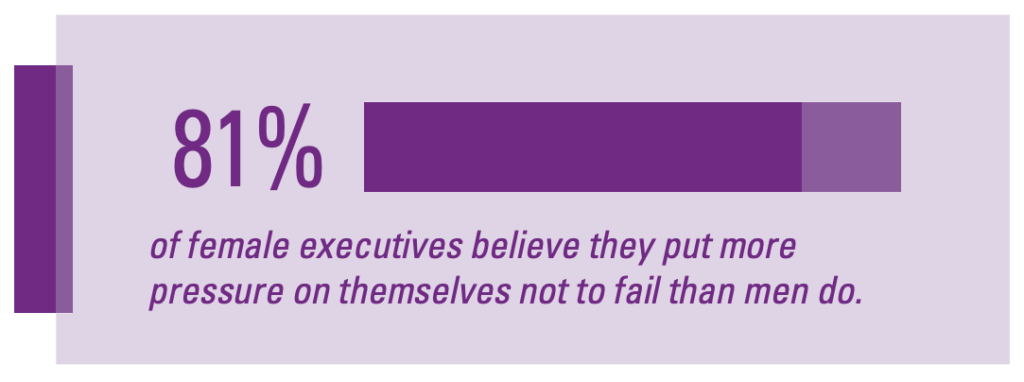Today’s Community Contributor post comes from Gabrielle Sadeh, a consultant, social media specialist, and blogger based in Tel Aviv.
COVID-19 has turned the world of work upside-down for everyone, but the impact it’s had on women is well out of proportion to the effect it’s had on men. Recent research published by TrustRadius to mark International Women’s Day reveals the extent to which the pandemic has set back gender equality in the tech world. The fight was far from over even before COVID-19 hit, with slow progress and many obstacles in the road.
Among the many interesting insights nestled in TrustRadius’s data is the discovery that 57% of women in tech feel burned out at work this year, compared to 36% of men.

It’s also notable that only men replied that they hadn’t experienced any change to their work life.
It would be easy to dismiss this statistic as purely affected by COVID-19, but like with so many other trends, the pandemic only exacerbated what was already present.
Women still have to do more than men at work to be considered equal
According to the survey, 78% of women in tech feel they have to work harder than their colleagues to prove their value, but only 54% of men said the same. This perception drove more women than men to take on extra work responsibilities and do more overtime during the pandemic, even though women were hit harder by a rise in housework and childcare.
The pressure on women to “do better” appears at every level. TrustRadius reports that women in leadership positions are even more likely to feel the need to prove themselves, but for men, the higher they rise the less pressure they feel to outperform their peers. Despite pushing themselves to the limit, women still feel that their abilities go overlooked. About 25% of white women and 35% of women of color say that a lack of trust in their abilities is a barrier to promotion.
Some companies are better at curbing this mindset than others, and giving employees leeway for scheduling flexibility is helpful – regardless of gender issues. “We’ve always discouraged presenteeism and encouraged everyone, both men and women, to leave work early a couple of days a week to spend time with their kids,” writes Tal Sterling, the HR lead at business management app company vcita. “This is modeled from the top-down, with even our CEO taking time off in the afternoons on a regular basis to be with his family.”
COVID-19 only added to the pressure
The pandemic just pushed this trend even higher. TrustRadius’s findings show that childcare responsibilities increased for 29% of women in tech, but for only 19% of men – and that 42% of women say they did most of the housework during the pandemic, while only 11% of men said the same.
Despite shouldering a greater proportion of childcare and household tasks, women still felt obligated to maintain productivity and avoid letting performance slip.
For example, women have observed that when men are interrupted by children on a work call, they don’t try to hide it and often bring the child into the call. However, when women are interrupted they apologize enormously for what’s seen as a parenting fail and do their best to remove the child as quickly as possible.

Image source: https://womensleadership.kpmg.us/summit/kpmg-womens-leadership-report-2020.html
It’s hard to know if this attitude derives from external demands or internal pressure, but the two intertwine. Women already have far higher rates of “imposter syndrome,” which leads them to push themselves harder, but those feelings of inadequacy are often fueled by organizational cultures and their work atmospheres.
One recent study by KPMG found that 75% of female executives experienced imposter syndrome at some point in their career, and 74% believe this occurs less often to their male counterparts.
When asked what would ease these feelings, close to half said that a supportive manager would help, and almost a third that feeling valued and rewarded fairly would make a difference, which echoes with the TrustRadius finding that women still feel a lack of trust in their abilities, highlighting how workplace dynamics feed this phenomenon.
Often, just giving team members reminders that dialogue and collaboration are encouraged can go a long way towards keeping overwhelm in check. “The solution to feelings of overwhelming workload happens at the local level,” notes Amy Lavoie, Glint’s head of people science strategic development. “As for workload, the reality for women can feel disheartening. Managers can create a path forward for all employees – not just women – by candidly talking about well-being, helping prioritize tasks, and clearing barriers.”
For women in tech, the increased productivity of WFH may be a myth
Many point to the adoption of flexible working conditions, including remote work, as being a major upgrade for women in tech, but it’s no silver bullet. Managers and colleagues might assume that while your working times may change, you’ll maintain the same performance levels at home as you can in the office without distractions, but this is often a fallacy.
Because mothers’ childcare involvement has increased more than fathers’ over the past year, many found it impossible to be reasonably productive when working from home during the pandemic. As TrustRadius Research Analyst Elizabeth Sullivan-Hasson puts it, “the deteriorating boundary between work and home can mean working overtime at both.”

TrustRadius asked whether remote work has helped or hurt women in tech. Among women, the responses were evenly split, with 42% of women saying it had a negative impact and 41% that it was positive, but 54% of men thought it was positive in contrast to 23% replying negative.
Additionally, men in leadership positions were more likely to think that remote work is positive for women in tech, but female leaders were more likely to consider it a negative move. With men twice as likely overall to believe remote working had a positive impact on women, it seems that men don’t realize that WFH is not always a boon.
In her research, Sullivan-Hasson continues, “This may be due to an increased focus on results, which could be viewed by male leadership as equalizing the playing field. Women in leadership positions may experience the pandemic overload firsthand and may have a different view.”
Don’t blame COVID-19 for the fallout on women in tech
Bearing all of this in mind, it’s easy to see why there is such a significant gap between the numbers of men and women in tech who feel burned out in 2021. Women have experienced far heavier burdens both in the realm of work and in the home during the pandemic, without either receiving or cutting themselves any slack for a drop in performance.
While COVID-19 undeniably added to the stress and anxiety, the pre-existing attitudes towards women in tech set the scene for COVID-19 to have such an impact.
Need Any Technology Assistance? Call Pursho @ 0731-6725516




